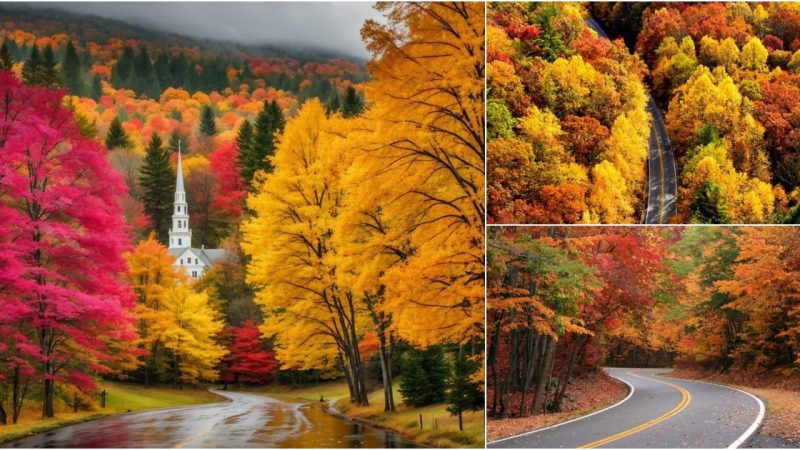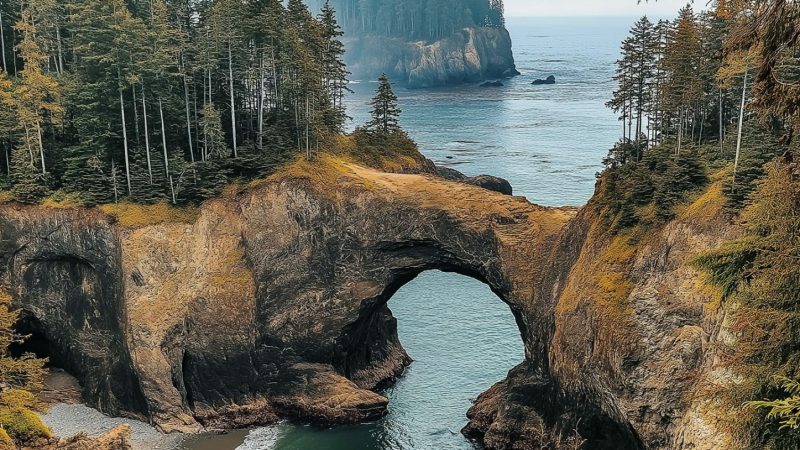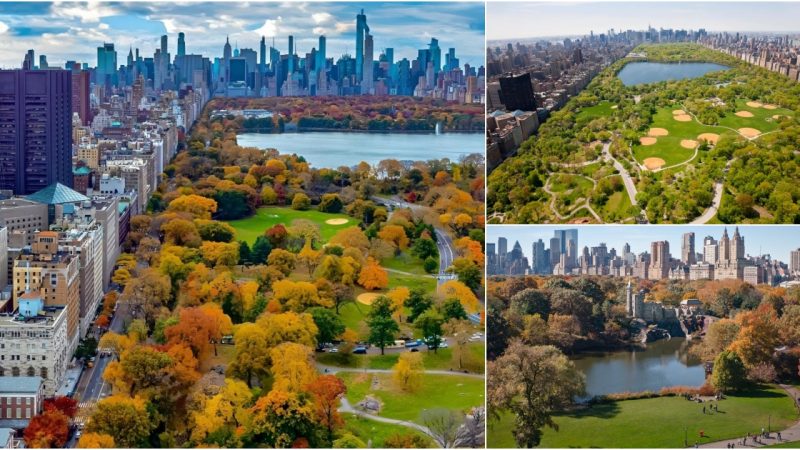Ancient Petrified Opal Tree Trunk in Arizona: A 225 Million-Year-Old Marvel

Arizona, typically associated with dry, windy deserts, is a state that evokes images of harsh landscapes that can scorch the skin and make standing in the sun a risky endeavor.
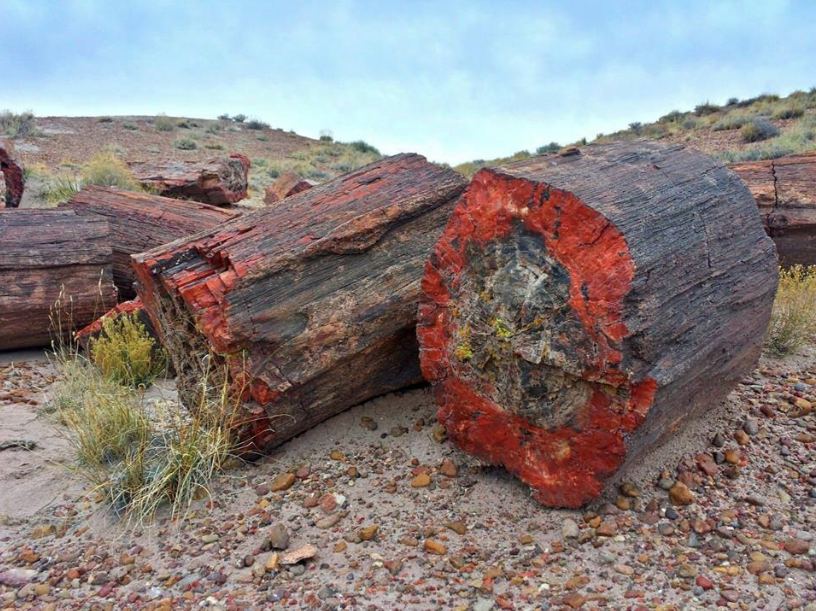
While Arizona is often portrayed in Hollywood westerns, depicting the high-rolling lifestyle of independent individuals who ventured west in pursuit of silver mining and entrepreneurial pursuits, it is not typically associated with lush forests and wooded areas. However, millions of years ago, Arizona was indeed covered in forests, and today it is home to the Petrified Forest National Park located in the northeastern part of the state.
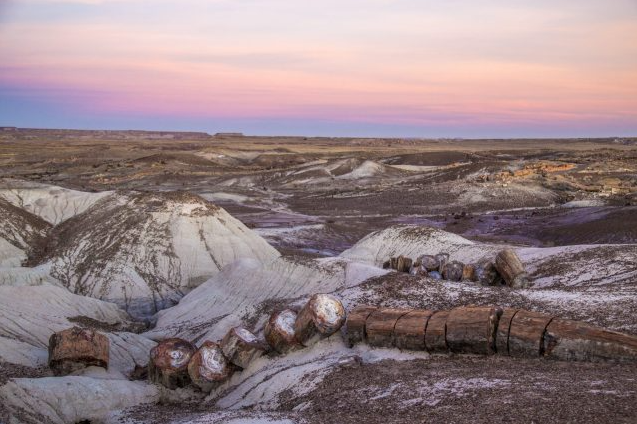 The story of Arizona’s petrified wood begins approximately 225 million years ago during the Late Triassic period. Today, the park is one of the world’s largest natural tourist attractions and serves as a rich source of material for researchers. Encompassing nearly 150 square miles of land at an elevation of over 5,000 feet, the park’s vegetation predominantly consists of desert plants such as grasses and cacti.
The story of Arizona’s petrified wood begins approximately 225 million years ago during the Late Triassic period. Today, the park is one of the world’s largest natural tourist attractions and serves as a rich source of material for researchers. Encompassing nearly 150 square miles of land at an elevation of over 5,000 feet, the park’s vegetation predominantly consists of desert plants such as grasses and cacti.
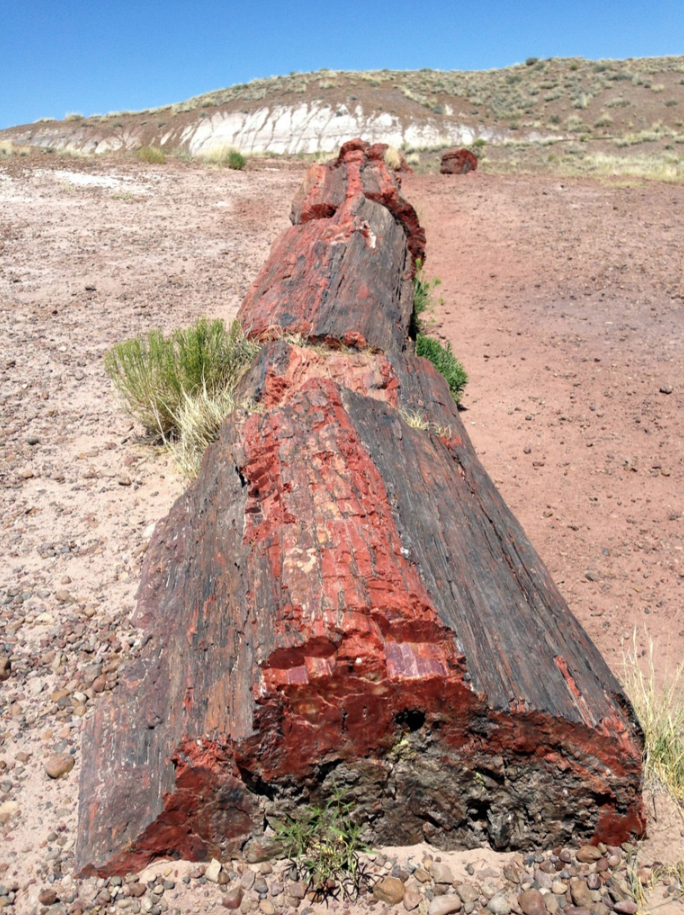
Incredibly, around 225 million years ago, Arizona was bordered by a sea on its western edge and was affected by volcanic activity that spewed ash onto the land. At that time, the region within present-day Arizona was a lush subtropical forest teeming with ancestors of today’s conifers. As the water receded, many trees became trapped in the waterlogged earth, remaining submerged and out of reach of air and microorganisms that could cause decay. Over time, these trees became petrified—essentially dried up—and now serve as a remarkable resource for scientists, archaeologists, and other experts seeking to understand the landscape of the past and its evolution.
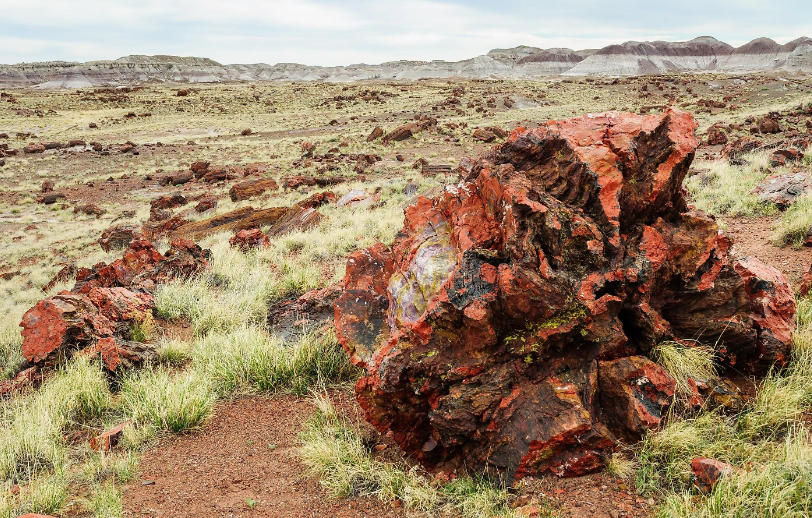
In addition to the ancient fossilized trees, the park’s earth also contains remains of dinosaurs, lizards, and various other creatures that once roamed the area. Centuries ago, snails and even crocodiles were common inhabitants of this region.
The eruptions from nearby volcanoes blanketed the area in volcanic ash, introducing silica into the groundwater. One particularly intriguing aspect of the petrified trees is what lies within them. In one trunk, there is opal—a semi-precious stone known for its beauty and used in jewelry. In March 2020, experts made the striking and unusual discovery of opal-lined sections within a trunk, adding to the allure of this peculiar yet beautiful place.
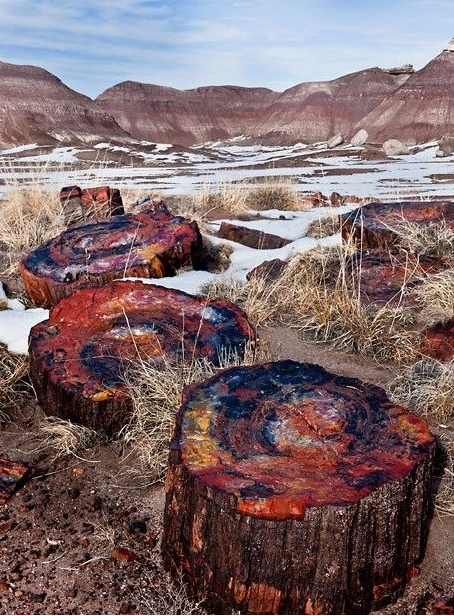
The petrification process occurs as silica from the groundwater is absorbed into the wood through capillary attraction. When wood sinks into the waterlogged earth and remains there, minerals can penetrate it through the sediment. The presence of minerals in the groundwater allows them to access the wood. 
Over time, all the organic matter of the plant is replaced by minerals like pyrite (commonly known as “Fool’s Gold”) and silica. The silica crystallizes and eventually transforms into quartz. With the addition of other minerals, the interior of the wood displays a rainbow of colors, creating a strikingly beautiful spectacle.

Experts claim that this national park is likely the largest and most visited petrified forest in the world. It continues to captivate both experts and casual visitors with its stunning visual delights. Moreover, it offers a unique opportunity to witness firsthand what the landscape of Arizona looked like in the past and the type of vegetation that thrived there.
The Petrified Forest National Park stands as a stunning reminder of how nature works ceaselessly, transforming ancient trees into remarkable fossils and preserving the secrets of a bygone era for researchers and visitors to marvel at.

